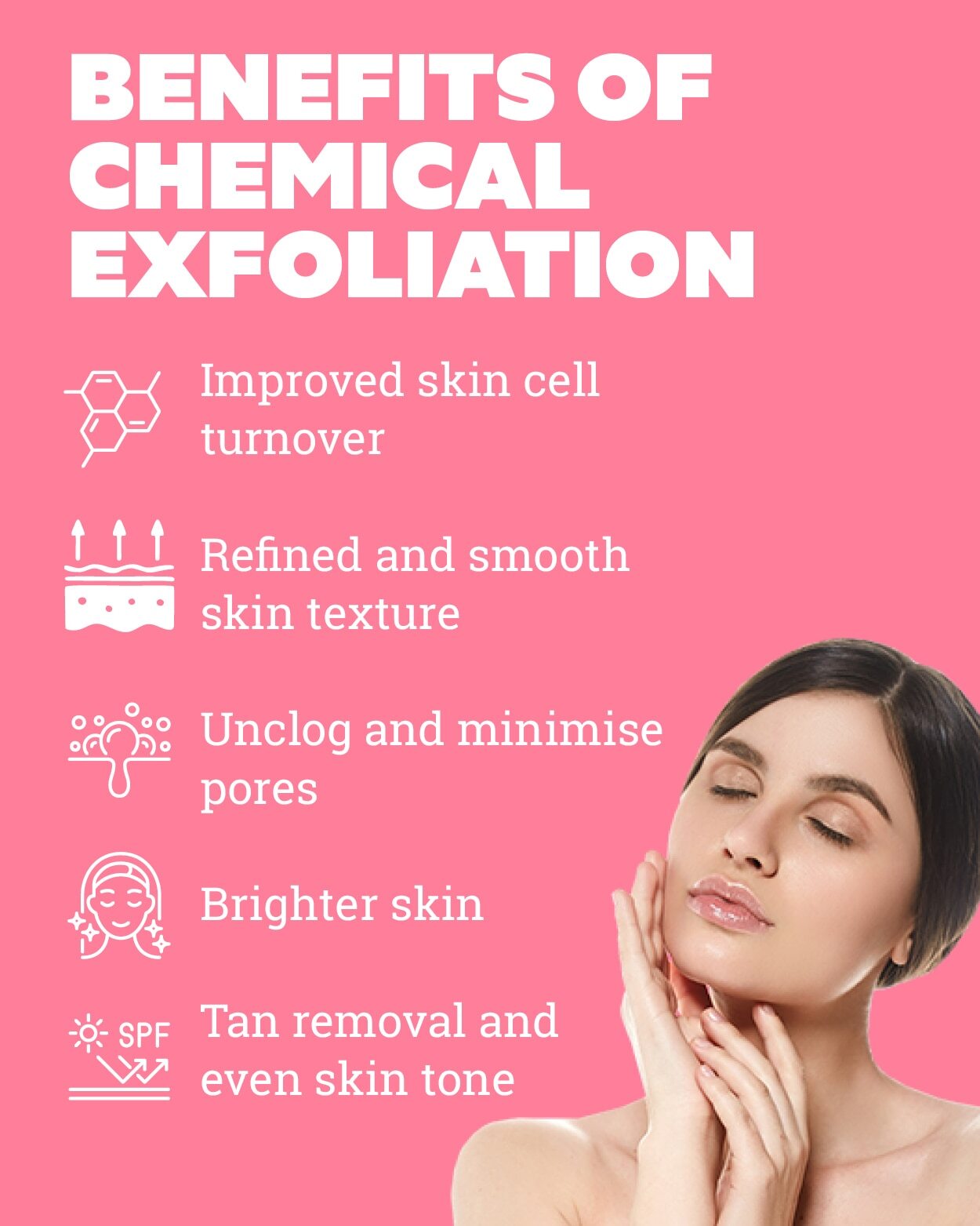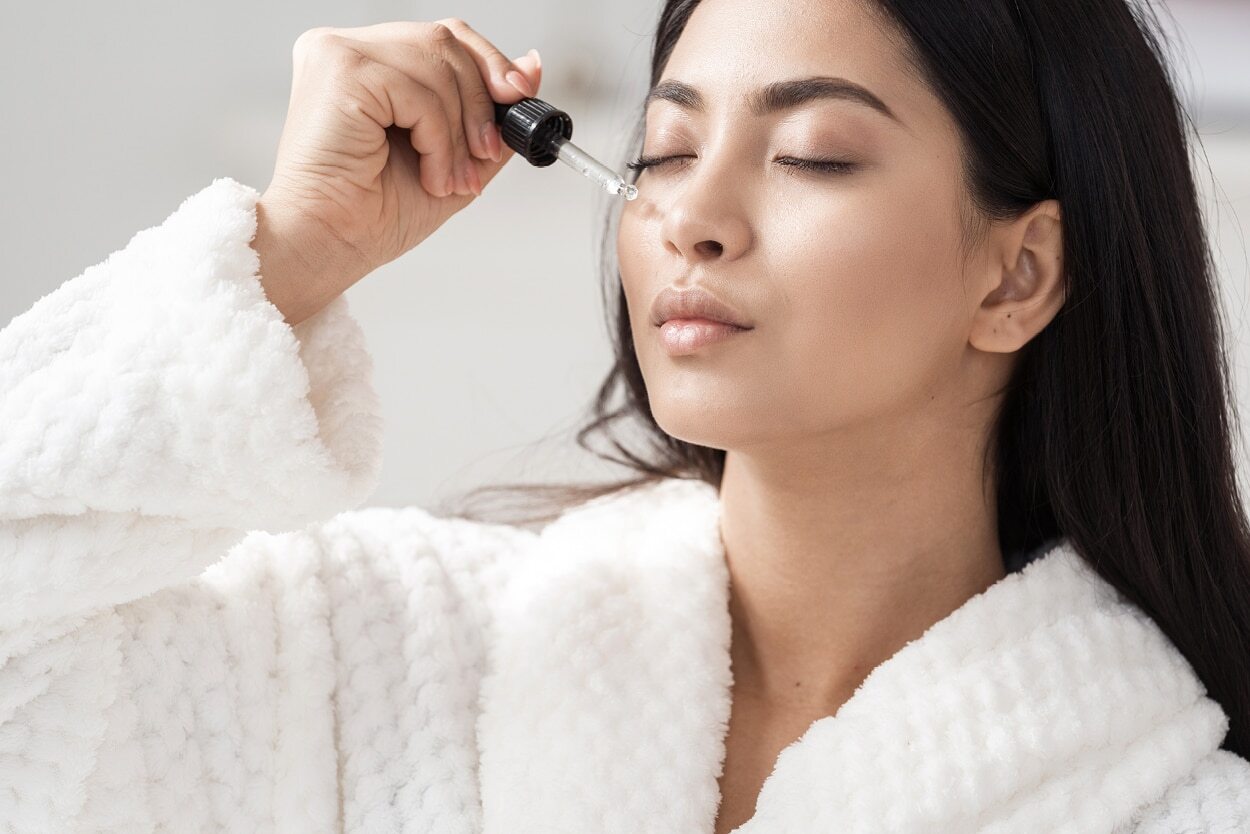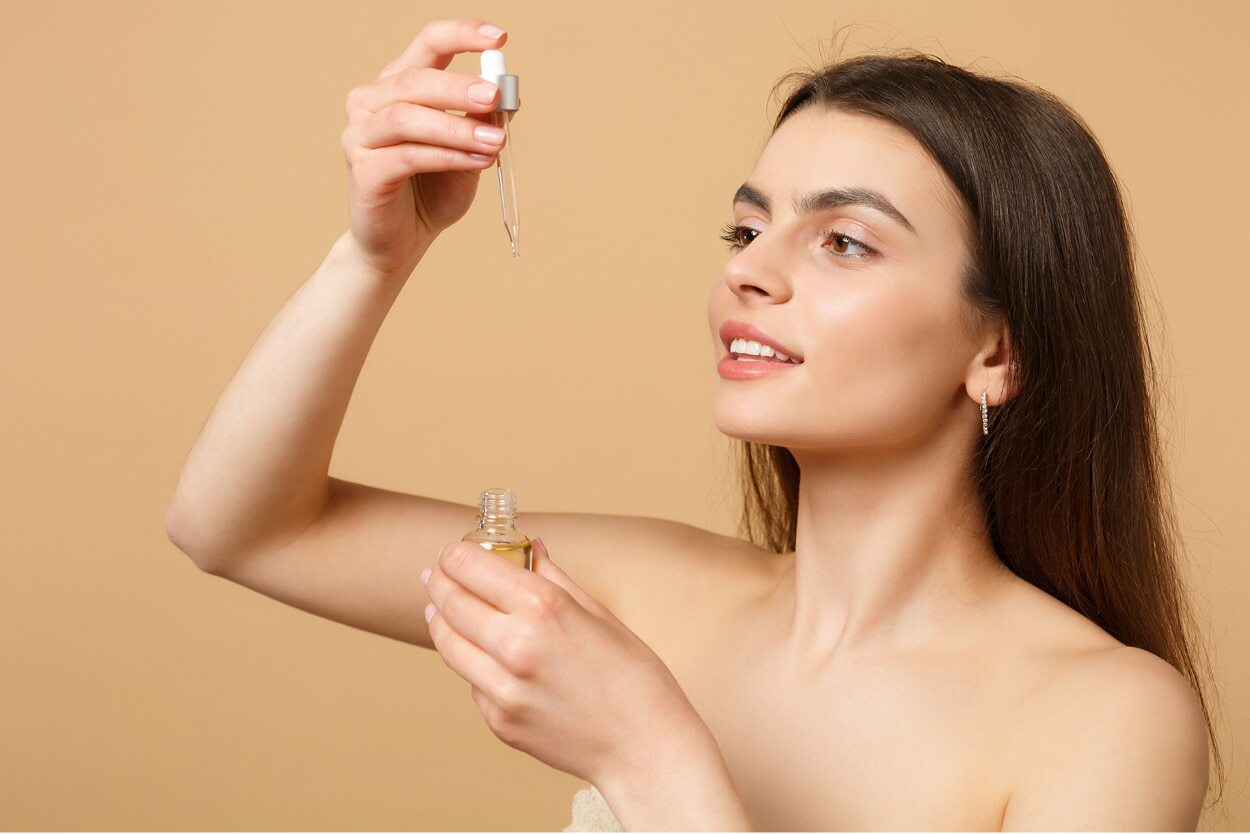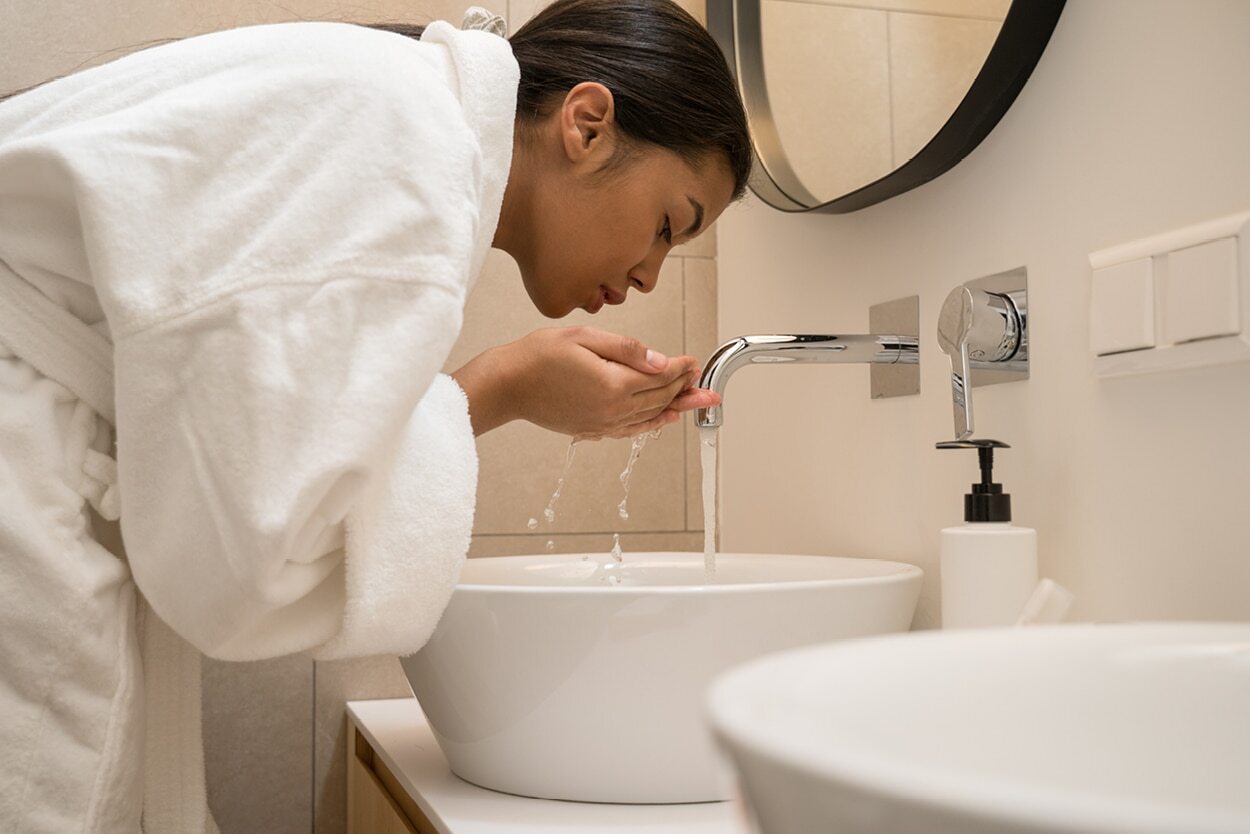- 01 Benefits of chemical exfoliation
- 02 How does chemical exfoliation work
- 03 How are chemical exfoliation different from physical exfoliation
- 04 Physical exfoliation for different skin types
- 05 How to start with chemical exfoliation
- 06 Expert recommended advice on over- or under-use of chemical exfoliation
- 07 FAQs about chemical exfoliation
Chemical exfoliation has gained a lot of popularity in the skincare community. Effective ingredients paired with visible results has made use of chemical exfoliants a routine practice. But given that it is being talked about so much these days, the key details and specifics can be lost in translation in favour of trendy ingredients and celeb-approved recommendations. This is why we got our in-hour skin expert Dr. Sravya C Tipirneni to lay out the basics - what it means and how to undertake it safely. Dr. Tipirneni revealed, "Chemical exfoliation basically deals with the skin cells - our skin cells have a natural cycle all over the body and typically regenerate every month approximately. But, our environmental factors like lifestyle, stress, exercise, sun exposure, and ageing can slow the process down. That's why we have exfoliation as a remedy for this. It's a simple and quick way of removing the dead skin cells and this can really help in improving your complexion, glow, brightening the face and fading other scars and blemishes or sunspots that may be there on your face".
01Benefits of chemical exfoliation

As seen above, the regular practice of chemical exfoliation can help slough off dead skin cells and in turn, afford your skin many benefits. This is primarily due to the use of lots of different kinds of acids. To name a few, there is azelaic acid, carbolic acid, citric acid, galactose, glycolic acid, lactic acid, gluconolactone, lactobionic, malic acid, mandelic acid, retinoid acid, salicylic acid and tartaric acid. Proper and guided use of these acids to chemically exfoliate your skin can help refine your skin, revealing fresh skin underneath. It can also aid in better absorption of the other products in your skincare routine.
02How does chemical exfoliation work

Chemical exfoliants are acids that get rid of the dead skin cells and improve or increase the cell turnover cycle in order for the skin cells to shed. They come in different concentrations - the weaker acids can usually be bought over-the-counter, while the stronger ones or the higher strength ones are usually done in the dermatologist's clinic in the form of a chemical peel. They work by breaking the bonds that hold the skin cells together. As these bonds are broken by the chemical, the top layers of the skin eventually shed in different cycles and they reveal the naturally regenerated, rejuvenated and brighter skin underneath. With regular use and the correct concentration of acid, the skin will feel smooth, look even toned, the pores look visibly reduced, and unclogged. It will also help in fading the signs of ageing, tan removal and treating acne.
03How are chemical exfoliation different from physical exfoliation

While acids chemically remove the outer layers of the skin, the physical ones do so manually. Physical exfoliants such as a scrub, certain dermatological brushes, or procedures like dermabrasion can suit some people. However, most skin types show some kind of aversion to physical exfoliation as they can be abrasive and harsh on your skin. Also, physical methods do not have the same penetration or depth as the chemical exfoliant and may or may not be effective alone. Now that you have some basic knowledge about what chemical exfoliation is and what its benefits are, here are some expert tips on picking the right exfoliants for your skin type...
04Physical exfoliation for different skin types

Chemical exfoliants can be used in the form of potent serums or foams and cleansers infused with the exfoliants. Choosing the right chemical exfoliation method depends on the skin type -
Dry skin -
Excessively dry skin can use AHAs as they work only on the skin surface and help seal in the moisture as well. Lactic acid and glycolic acid are good for this.
Sensitive skin -
If you have very dry or sensitive skin, BHAs can soothe and calm the skin making them ideal for sensitive or redness-prone skin. PHAs are also a good option for sensitive skin and can be beneficial for skin issues like eczema and rosacea.
Oily, acne-prone skin -
If you have oily and acne-prone skin, salicylic acid particularly is great for clearing out the pores that lead to breakouts. To counter the dryness caused by salicylic acid, combine it with a lactic acid AHA to improve the skin's moisture factor.
Combination skin -
You can go for a serum containing salicylic acid for its exfoliating and anti-inflammatory effect. You can also use something in combination with lactobionic acid.
Ageing skin -
You can use AHAs like glycolic, citric and lactic acid because this help diminishes the signs of ageing by targeting fine lines and deeper wrinkles. They can also improve the texture of your skin by dealing with its roughness and they leave the skin glowing because of the anti-ageing antioxidants in them.
05How to start with chemical exfoliation

It is important to start with chemical exfoliation slowly. Consult your dermatologist about the right kind of exfoliant to suit your skin, do a patch test 48 hours before trying a new product and make sure to only use it once a week. Watch how your skin reacts to the exfoliant and depending on the level of interaction and visible differences, you can increase the frequency, keep it the same or even try a new kind of chemical exfoliant. Make sure to always protect your skin with sunscreen as chemical exfoliation can make your skin sensitive to the sun. Also, make sure to use only one kind of chemical exfoliant in a single routine and if you do wish to try combinations, take an expert's advice on the same.
06Expert recommended advice on over- or under-use of chemical exfoliation

Dr. Tipirneni revealed, "We should also learn what will happen if we over-exfoliate or under-exfoliate. Thankfully, it is very easy to recognise when you're not exfoliating enough because your skin texture will appear rough, your complexion will still be dull and you will obviously get a feeling that your skincare products are not working because you have a whole buildup of dead skin. Over-exfoliation is most commonly done by over-aggressive patients. This results in irritation, inflammation, dryness, redness, breakouts, excessive peeling of the skin etc., and you will need treatment from a dermatologist for this. The bottom line is - understand your skin, you can easily get a glow even with low concentrations and just make sure that your skin is happy. Don't jump into chemical exfoliation, increase the frequency and the strength gradually and slowly until you achieve your desired result.
07FAQs about chemical exfoliation

Q. Which kind of chemical exfoliation can get rid of sun-tanned skin?
**A. **If you have signs of sun damage combined with age, you can use a glycolic and lactic acid combination. Together, they resurface the uneven texture, as well as reduce the surface hyperpigmentation, patchiness and tanning - while also supporting the natural moisture balance of the skin.
Q. How to get rid of hyperpigmentation with chemical exfoliation?
**A. **If you have very pigmented, scarred, spotty, or patchy skin, you can use a BHA like salicylic acid first to increase the cell turnover. Then combine it with strong AHAs, like glycolic acid 5%, help with the pigmentation and hydrate the skin.
Q. How long does chemical exfoliation take to work?
**A. **If you have chosen the right exfoliant for your skin type, chemical exfoliation can show results from the very first use. You can see visible changes in your skin from 3 weeks onwards, however, regular use is necessary to maintain the results for the long run.








